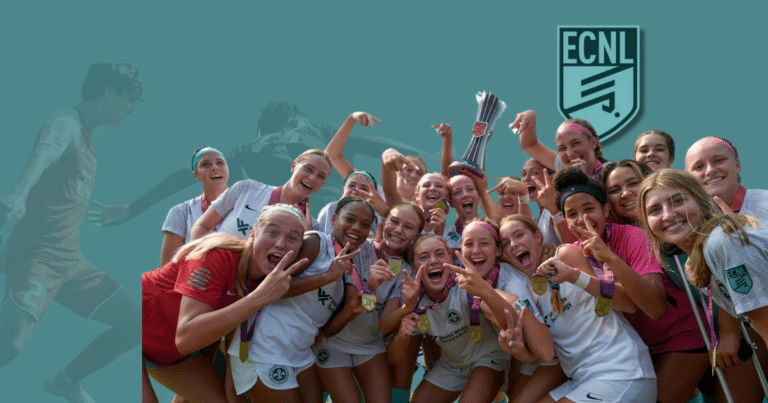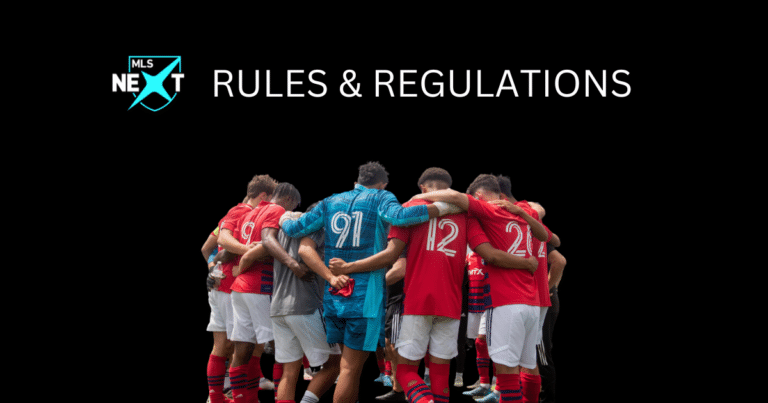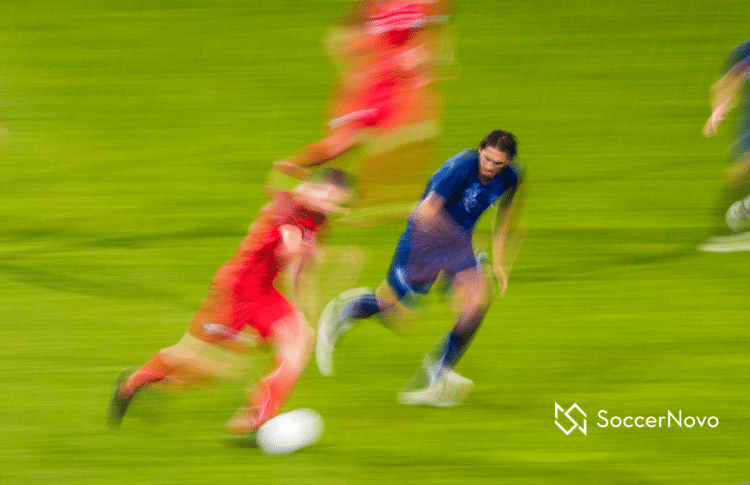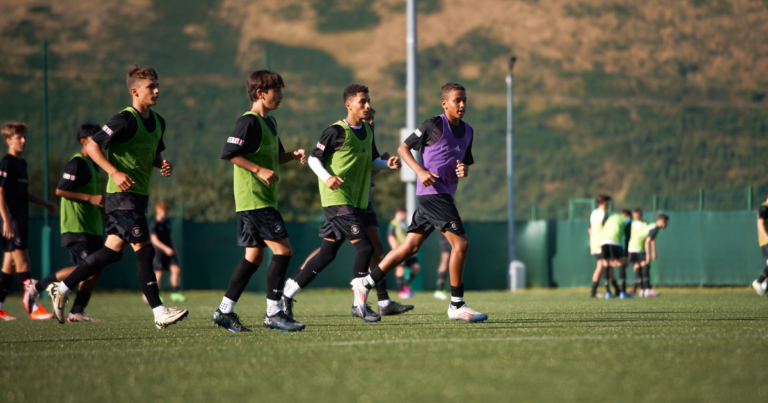Is Soccer a Contact Sport?
Is soccer a contact sport? The answer may not be as straightforward as you think. While soccer is not typically thought of as a contact sport like American football or hockey, it does involve physical contact between players.
In soccer, physical contact is allowed as long as it is not excessive or dangerous. Players can use their bodies to block opponents, slide tackle to steal the ball, and even shoulder charge.
If you’ve ever watched a D1 college soccer game, you’ll know exactly what I’m talking about. Players are always banging into each other to try to get the ball.
It’s important to note that intentional or reckless fouls that can cause injury or harm to another player are not allowed and will result in a penalty or even a red card.
To answer our questions above, “Is soccer a contact sport?” I would say, it most certainly is! Here’s why…
Types of Contact in Soccer
As we addressed it, soccer is a contact sport, which means that players will inevitably come into contact with each other during the game. However, not all contact is the same.
In soccer, there are three main types of contact: physical contact, shoulder-to-shoulder contact, and incidental contact.
Physical Contact
Physical contact in soccer is any contact that is made intentionally and with force. This type of contact is usually considered a foul and can result in a yellow or red card. Examples of physical contact include pushing, shoving, tripping, and tackling. You shouldn’t be doing any of this intentionally!
Shoulder-to-Shoulder Contact
Shoulder-to-shoulder contact is a type of contact that is allowed in soccer. It occurs when two players are running side-by-side and their shoulders touch. This type of contact is considered legal as long as it does not involve pushing or shoving.
Shoulder-to-shoulder contact is a common occurrence in soccer and is an important part of the game.
Incidental Contact
Incidental contact is contact that occurs accidentally and is not a result of any intentional action by the players. This type of contact is not considered a foul and does not result in any disciplinary action. Examples of incidental contact include players bumping into each other while running or jumping for the ball.
Soccer Rules Related to Contact
Legal Contact
Legal contact in soccer is nominally described as being “shoulder to shoulder” between two opponents, as one player comes into the other, or challenges for the ball. This type of contact is allowed, and it’s considered a fair challenge.
Illegal Contact
Soccer rules prohibit some types of contact, including:
- Pushing, tripping, or kicking an opponent: These actions are considered fouls and can result in a free kick or penalty kick for the opposing team.
- Charging an opponent from behind: This is known as a “blindside tackle” and is considered a dangerous play. It can result in a yellow or red card, depending on the severity of the offense.
- Using excessive force: Players are not allowed to tackle with excessive force, charge, or strike opponents. These actions are considered dangerous and can result in a yellow or red card.
Accidental Contact
Accidental contact in soccer is not considered a foul, but it can still result in injury. Players should always try to avoid making accidental contact with opponents, but it’s not always possible to do so. If accidental contact occurs, the referee will usually stop play to allow injured players to receive treatment.
Injuries in Soccer Due to Contact
Due to the physical nature of soccer, many injuries occur during practices and games. Here’s a list of some common injuries as a result of physical contact in soccer.
Common Injuries
Ankle Sprains
Ankle sprains are one of the most common injuries in soccer. They occur when the ankle is twisted or turned in an awkward position, causing damage to the ligaments.
This injury can result from contact with another player or from landing awkwardly after a jump. Symptoms of an ankle sprain include pain, swelling, and difficulty walking.
Knee Injuries
Knee injuries are also common in soccer, particularly among female players. The most common knee injuries are ACL tears, which occur when the anterior cruciate ligament in the knee is torn.
This injury can result from a sudden change in direction, stopping abruptly, or landing awkwardly after a jump. Symptoms of an ACL tear include pain, swelling, and instability in the knee.
Head Injuries
Head injuries are a serious concern in soccer, particularly concussions. Concussions can occur from a collision with another player, a fall, or a ball hitting the head.
Symptoms of a concussion include headache, dizziness, confusion, and sensitivity to light and sound.
Preventing Injuries
Proper Warm-up and Stretching
One of the best ways to prevent injuries in soccer is to properly warm up and stretch before playing. This will help to loosen up the muscles and prepare them for physical activity.
A good warm-up should include light jogging, jumping jacks, and stretching exercises for the legs, hips, and back.
Protective Gear
Wearing protective gear can also help to prevent injuries in soccer. Shin guards are a must to protect the shins from kicks and collisions with other players. Mouthguards are typically optional but can help to prevent head injuries.
Proper Technique
Using proper technique when playing soccer can also help to prevent injuries. This includes using the correct form when kicking, passing, and tackling. It is also important to avoid dangerous tackles and collisions with other players.
Example of a No Contact Sport
These sports are defined as activities that do not involve purposeful physical contact with other players or objects. Here are a few examples of non-contact sports:
Shooting Sports
Shooting sports, such as archery, clay pigeon shooting, and rifle shooting competitions, are great examples of non-contact sports.
These sports involve using precision and accuracy to hit targets from a distance. While shooting sports do not involve physical contact with other players, they require a high level of focus, skill, and mental toughness.
Gymnastics
Gymnastics is another example of a non-contact sport. This sport involves performing a variety of acrobatic and athletic movements, such as flips, twists, and balance routines.
Gymnastics requires a high level of strength, flexibility, and coordination, but does not involve physical contact with other players.
Swimming
Swimming is a popular non-contact sport that involves racing against other swimmers in a pool. This sport requires a high level of endurance, strength, and technique to swim efficiently and quickly. While swimmers may come into contact with each other during races, it is not intentional and is generally considered incidental.
Track and Field
Track and field is a collection of sports that involve running, jumping, and throwing events. These sports do not involve physical contact with other players, but require a high level of physical fitness, speed, and technique. Track and field events are often individual competitions, but can also involve team relays.
Final Thoughts
I’ve had non-soccer friends come up to me and tell me that soccer is not a contact sport and it’s just for wimps. They can’t be further from the truth.
If you’ve seen a competitive soccer game, you’ll quickly notice the physicality. Players are bumping into each other with velocity constantly to win balls.
While the rules don’t dictate tackling to get the ball back like American football, you can use your shoulder to push opponents off the ball.
It is important to remember that while soccer is a contact sport, it is not a violent sport. The objective of the game is to score goals, not to harm other players. Good sportsmanship and fair play are essential components of the game, and players are expected to respect their opponents and play within the rules!

Written By: SoccerNovo
SoccerNovo is an independent youth soccer media brand built to help parents, players, and coaches better understand the game and the pathways available in U.S. soccer. Our mission is to make youth soccer simpler, clearer, and more accessible for everyone involved in it.
Let’s connect





